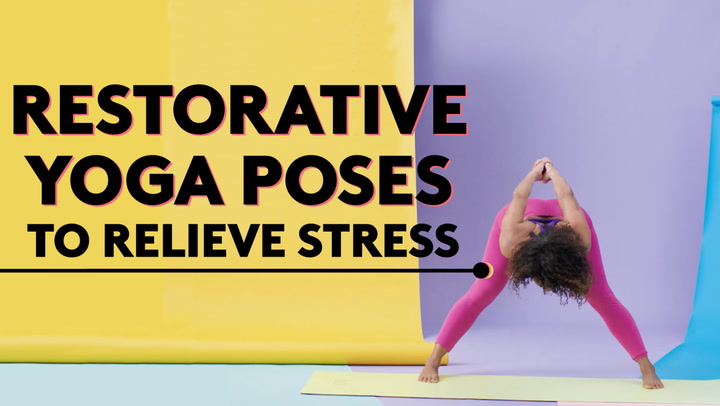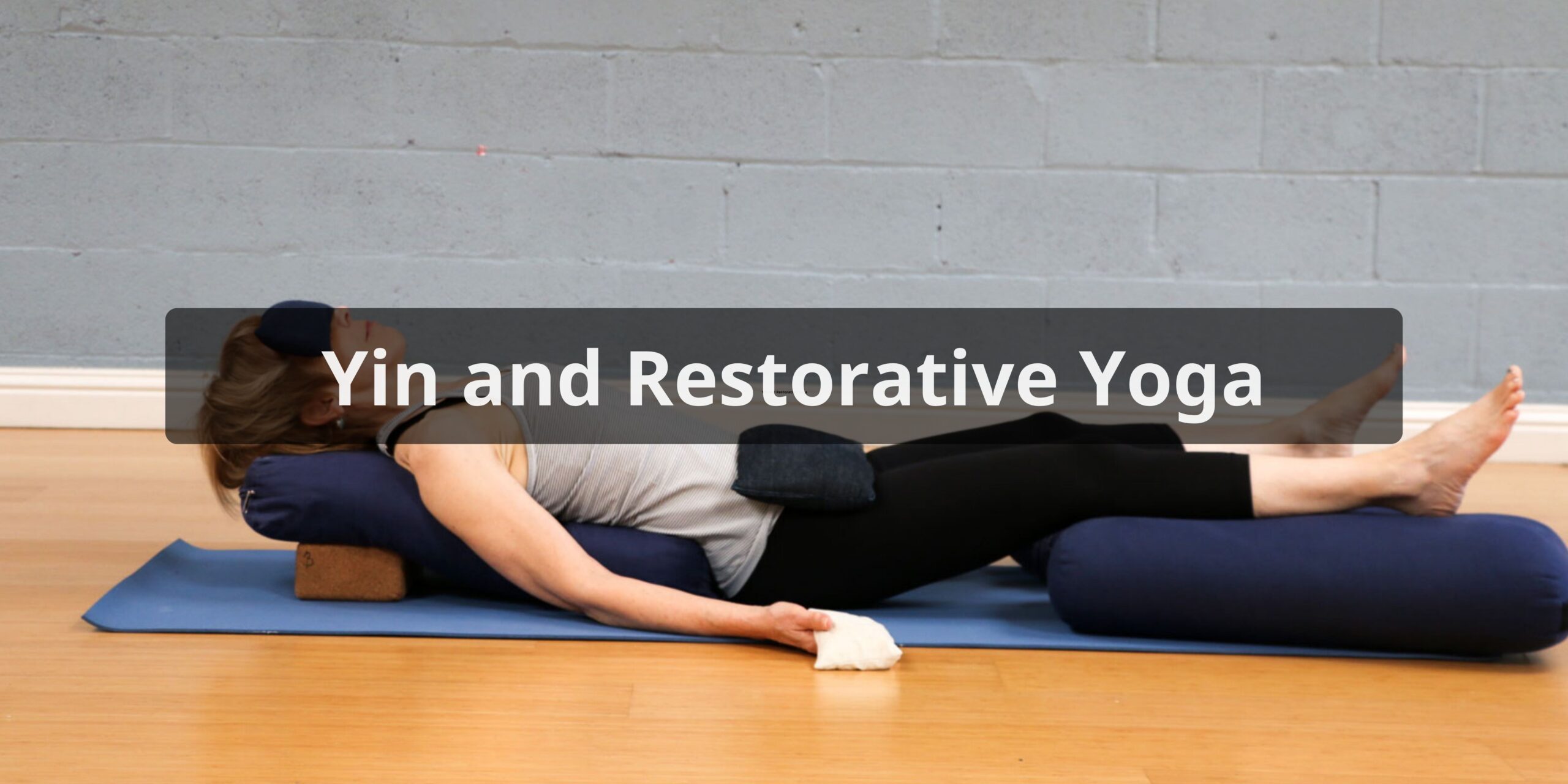Yoga has become an increasingly popular way for people to improve their health, reduce stress, and bring more mindfulness into their lives. While yoga classes tend to focus on faster-paced vinyasa flows, there are slower, gentler styles of yoga that provide immense benefits for both the mind and body. Yin and restorative yoga are two styles that place an emphasis on fully relaxing and unwinding. By holding poses for extended periods and focusing on deep breathing, these practices help release chronic tension, soothe frayed nerves, and cultivate a greater sense of inner peace.
What is Yin Yoga?
Yin yoga is a style that targets the body’s connective tissues and fascia rather than the muscles. The poses are held for 3-5 minutes or more to gently stretch areas like the hips, back, and legs. Props like blocks and bolsters are often used to allow muscles to fully relax while the stretch penetrates deeper layers of tissue.
Some key features of Yin Yoga include:
- Poses are held for longer periods of time, usually 3-5 minutes or more
- The focus is on stretching connective tissues, not muscles
- Props like blocks and bolsters are used to relax muscles and go deeper into poses
- There is an emphasis on stillness and mindfulness during the long holds
- It provides a deep, passive stretch perfect for stiff, tight areas
Including Yin yoga in your practice provides a complement to more active, yang styles of yoga. The long-held, gentle postures revive areas that get overworked and compressed from exercise, sitting at a desk all day, or repetitive movement patterns. It helps restore balance to the body’s tissues and energetic meridians.
Regular practice yin yoga numerous benefits:
- Improves flexibility and range of motion
- Reduces muscle tension and soreness
- Relieves stress and anxiety
- Calms the nervous system
- Promotes deeper relaxation and sleep
- Sparks mindfulness and inner stillness
- Enhances circulation and vitality
The passive nature of Yin makes it perfectly suited for older populations, sedentary individuals, or those recovering from illness or injury. It provides a therapeutic effect without strain or fatigue. The meditative quality also nourishes the spirit and quiets busy minds. Above all, Yin allows us to linger and savor each pose, creating space for relaxation.
The Calm and Restoration of Restorative Yoga

Restorative yoga is another nurturing style that emphasizes complete rejuvenation. The practice uses various props to support the body in gentle poses, allowing muscles to surrender so one can experience full-body relaxation. Seated forward folds, twists, and inversions like Legs Up the Wall are common restorative postures. These are held for 5-15 minutes each to induce a state of deep calm.
Here are some of the main aspects of Restorative Yoga:
- The body is fully supported with props like bolsters, blocks, blankets and straps
- Poses are designed to be completely comfortable and devoid of strain
- Positions are held for longer periods of 5-15 minutes
- The practice deeply calms the body and quiets the mind
- It provides a healing balance to our hyper-stimulated nervous systems
Some of the many benefits of restorative yoga include:
- Lowers stress hormones like cortisol
- Induces full-body relaxation and “rest-and-digest” response
- Reduces anxiety, fatigue, and headaches
- Enhances parasympathetic nervous system activation
- Improves sleep quality and insomnia
- Cultivates mindfulness and inner tranquility
- Assists recovery from illness or injury
- Soothes common ailments like back pain, sciatica, and TMJ
The extended pose times send signals to the nervous system that it’s okay to rest and unwind. This allows us to tap into a profound state of relaxation. The passive nature provides renewal without taxing the body in any way, making it therapeutic for many conditions. Even a short restorative yoga sequence restores both vitality to the body and stillness to the mind.
The Perfect Balance of Yin and Restorative Yoga
Yin and restorative yoga deliver unique benefits that powerfully complement one another. Alternating between the two provides the perfect recipe to release tension and nourish body, mind and spirit.
Some key differences between the two styles:
Yin Yoga
- Holding poses for 3-5 minutes
- Targets connective tissue and fascia
- Can be mildly uncomfortable at times
- Builds flexibility and resilience
Restorative Yoga
- Holding poses for 5-15 minutes
- Fully supported postures
- Emphasis on ease and comfort
- Invokes relaxation response
Ideally, a balanced yoga practice includes some of both Yin and restorative. This combination offers the full spectrum of benefits. The longer-held Yin poses bring fluidity to stiff joints and freedom of movement. Meanwhile restorative postures induce complete mental and physical relaxation. Together they provide the perfect complement to more active, muscle-toning forms of yoga and exercise.
Those new to yoga or with limited mobility may choose to start with restorative initially. The fully supported poses make it accessible to all. Once the body begins to open up, adding some Yin postures will help lengthen muscles and get into areas of chronic tension. For fitness enthusiasts and athletes, Yin and restorative practices are ideal on recovery days for refreshing tired systems.
Some key ways to incorporate both Yin and Restorative Yoga include:
- Taking restorative classes to learn the basics of proper prop use and supported poses
- Adding a few Yin postures after an active flow for greater mobility
- Designing Yin/Restorative sequences that alternate between passive stretching and total relaxation
- Practicing Restorative yoga on high-stress days or when needing to recharge
- Doing a Yin practice 1-2 days per week to continuously lengthen tissues
- Ending active practices with a short Restorative sequence
- Attending special Yin/Restorative yoga workshops when available
The tranquility cultivated in these practices is something that supports us in all aspects of life. Yin and Restorative yoga provide a vital pillar of our health and wellbeing. By rooting into stillness and softness, they dissolve tension, calm anxious minds, and open us to greater inner peace.
Conclusion
Yin and restorative yoga offer uniquely healing benefits for both body and mind. With an emphasis on slowing down, gently opening tissues, and inducing full-body relaxation, they provide the perfect antidote to our busy, stressful lives. Regular practice yields increased mobility, reduced tension, enhanced energy, and inner tranquility. Alternating between passive stretching and total rejuvenation creates the ideal balance to restore depleted systems. Allow yourself to surrender into these nurturing styles of yoga and savor the sense of deep renewal they provide.
FAQs About Yin and Restorative Yoga
What types of poses are typically practiced in Yin Yoga?
Yin Yoga involves long-held passive poses that target connective tissues and joints. Poses like “Dragon,”Butterfly” and “Saddle” are common, promoting deep stretches and relaxation.
What types of poses are typically practiced in Restorative Yoga?
Restorative Yoga incorporates poses supported by props, aiming for complete relaxation. Poses like “Supported Child’s Pose” and “Legs-Up-the-Wall” encourage comfort and gentle opening.
Can beginners practice Yin and Restorative Yoga?
Yes, both Yin and Restorative Yoga are accessible for beginners. These practices are gentle and allow modifications, making them suitable for individuals new to yoga.
How do Yin and Restorative Yoga practices promote relaxation and stress relief?
Both practices encourage relaxation by activating the parasympathetic nervous system. Yin’s deep stretches and Restorative’s supported poses induce a calming effect, lowering stress levels.
What role does breathwork play in Yin and Restorative Yoga?
Breathwork in Yin and Restorative Yoga enhances relaxation and presence. Slow, deep breathing aids in releasing tension, fostering a sense of calm and mindfulness during the poses.
How do Yin and Restorative Yoga contribute to improved flexibility?
Yin Yoga improves flexibility through sustained stretches targeting connective tissues. Restorative Yoga maintains flexibility by promoting relaxation and gentle opening in supported poses.
Are there specific benefits of Yin Yoga that Restorative Yoga doesn’t offer?
Yin Yoga targets deep connective tissues, promoting joint health and flexibility. Unlike Restorative Yoga, it focuses on tension release and mobility enhancement.
How do the benefits of Yin and Restorative Yoga complement each other?
Yin Yoga’s deep stretches enhance mobility, while Restorative Yoga’s supported poses nurture relaxation. The practices combined offer both structural and mental relaxation, supporting overall well-being.

